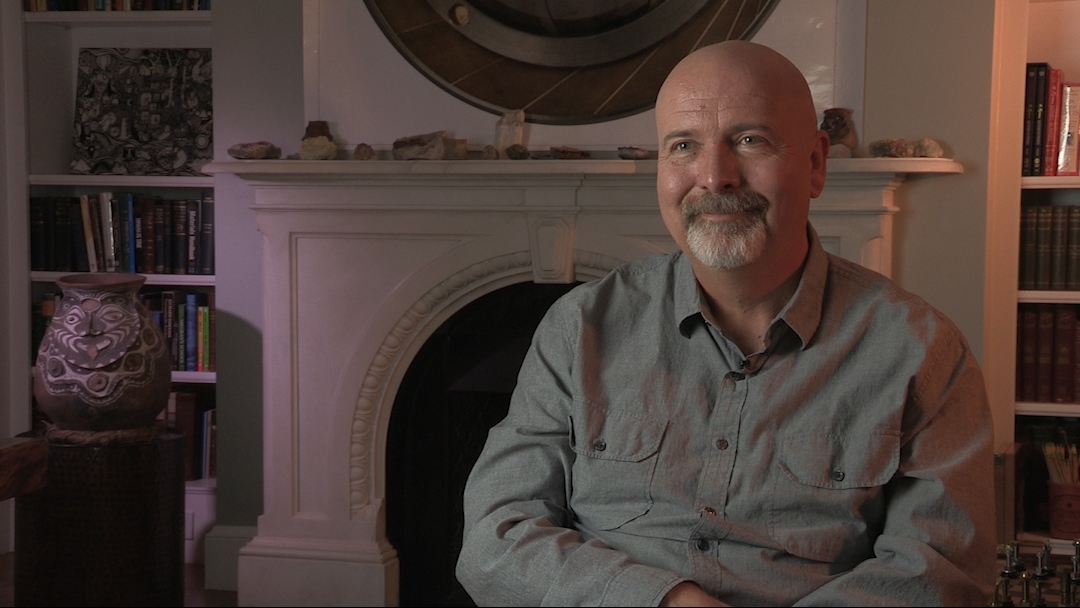NEXT STORY

How I met Marvin Minsky
RELATED STORIES

NEXT STORY

How I met Marvin Minsky
RELATED STORIES


|
Views | Duration | |
|---|---|---|---|
| 71. The book that influenced my application to MIT | 162 | 01:39 | |
| 72. MIT – the perfect place for me | 148 | 00:55 | |
| 73. How Jerry Lettvin talked me out of neurobiology | 193 | 03:30 | |
| 74. Doubting the things I heard from adults | 136 | 02:53 | |
| 75. 140 units of courses in one semester | 165 | 05:56 | |
| 76. Making a surprising mathematical discovery | 1 | 247 | 04:50 |
| 77. Realising that I may be smarter than others | 192 | 01:21 | |
| 78. There are many ways of being smart | 176 | 01:39 | |
| 79. Programming an interface for autistic children | 136 | 02:53 | |
| 80. How I met Marvin Minsky | 194 | 01:45 |


So when I arrived at MIT, and Jerry Lettvin convinced me not to go into neurobiology, he told me to go and meet Marvin Minsky who of course I had heard of. And he was kind of, I guess, a hero. But I didn't imagine him being somebody I could actually meet. But he was over in the artificial intelligence laboratory which in those days was in Technology Square. So it was a separate building that you had to have a special key to get into any of the labs.
So I went over there and slipped in behind somebody else and looked around for Marvin and couldn't find Marvin. But I discovered a library there. And so I thought, well, I'll look in the library, I'll look at all their proposals and figure out why they might need me. And so I found one proposal that they'd made to the National Science Foundation that said that they were working on computers for children, which this is the day when computers were big, expensive objects. But they told the National Science Foundation that they believed some day every school would have a computer. And based on this sort of radical idea that we should start thinking of what to do with them.
And they said, 'One of the things we'd like to work on but we don't really know how to solve is how children who can't even read and write could use a computer.' And it was like, 'Ah, something they haven't solved. I could do that.' So I came up with an idea of how children could interface with a computer using little blocks with pictures on them and cards with pictures on them. And by arranging pictures they could talk to the computer. And that was enough to get me an appointment with Seymour Papert who was the co-director of the laboratory.
And he liked the idea and it turns out they had a graduate student who was working on something similar. So I got hired to make this thing called 'the slot machine'. So it's a bunch of slots that you put cards into it. And so I built this thing for programming which actually did work and what was amazing about it is that it was the first time we ever used a computer with autistic children. And there was this amazing magic that happened when we had autistic children that couldn't read or even speak, interacting with the computer. And somehow they related to it and connected to it and so that was very exciting. And it was the first time we'd ever seen it.
W Daniel Hillis (b. 1956) is an American inventor, scientist, author and engineer. While doing his doctoral work at MIT under artificial intelligence pioneer, Marvin Minsky, he invented the concept of parallel computers, that is now the basis for most supercomputers. He also co-founded the famous parallel computing company, Thinking Machines, in 1983 which marked a new era in computing. In 1996, Hillis left MIT for California, where he spent time leading Disney’s Imagineers. He developed new technologies and business strategies for Disney's theme parks, television, motion pictures, Internet and consumer product businesses. More recently, Hillis co-founded an engineering and design company, Applied Minds, and several start-ups, among them Applied Proteomics in San Diego, MetaWeb Technologies (acquired by Google) in San Francisco, and his current passion, Applied Invention in Cambridge, MA, which 'partners with clients to create innovative products and services'. He holds over 100 US patents, covering parallel computers, disk arrays, forgery prevention methods, and various electronic and mechanical devices (including a 10,000-year mechanical clock), and has recently moved into working on problems in medicine. In recognition of his work Hillis has won many awards, including the Dan David Prize.
Title: Programming an interface for autistic children
Listeners: George Dyson Christopher Sykes
Christopher Sykes is an independent documentary producer who has made a number of films about science and scientists for BBC TV, Channel Four, and PBS.
Tags: Massachussets Intitute of Technology, Marvin Minsky
Duration: 2 minutes, 53 seconds
Date story recorded: October 2016
Date story went live: 08 August 2017